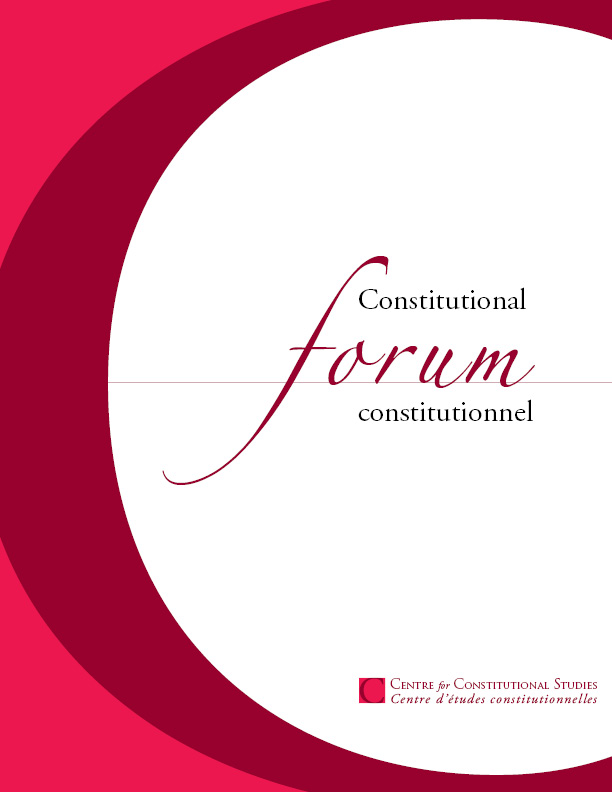A Project to Reduce Canadians' Constitutional Illiteracy
DOI:
https://doi.org/10.21991/C9HT18Abstract
How is it determined who is prime minister? Does the leader of the party that wins the most seats in the House of Commons, or that gets the most votes in the election automatically become prime minister? Who appoints cabinet ministers? Do cabinet ministers have to be MPs? Who appoints deputy ministers? What are deputy ministers? What are parliamentary secretaries? What is the PCO? What is the PMO? How is the Governor General selected? What are the Governor General’s powers? What is the role of the Queen in governing Canada? What contact, if any, can senior civil servants have with opposition parties? What contact, if any, can government leaders have with judges? How are treaties with foreign countries ratified? Why does Canada have treaties with Aboriginal peoples? Are there any constraints on federal spending in areas of provincial responsibility? What is the constitutional status of the northern territories and how does the federal government’s relationship with them differ from its relations with the provinces?
A Canadian citizen who wants to know how her country is governed should be able to get clear, authoritative answers to these questions without much trouble; so should a civics teacher in a school classroom or a person preparing immigrants for Canadian citizenship. These are not small technical questions — they are basic to knowing how Canadian government and democracy work — yet the citizen who looks for answers to these questions in the written text of Canada’s Constitution will look in vain.
Downloads
Published
Issue
Section
License
Authors who publish with Constitutional Forum constitutionnel grant the journal the right of first publication, and agree to license the work under an Attribution-NonCommercial-NoDerivs (CC BY-NC-ND) that allows others to share the work for non-commercial purposes, with an acknowledgement of the work's authorship and initial publication in this journal, as long as no changes are made to the original work. Please use this format to attribute this work to Constitutional Forum constitutionnel:
"First published as: Title of Article, Contributor, Constitutional Forum constitutionnel Volume/Issue, Copyright © [year], Publisher"





